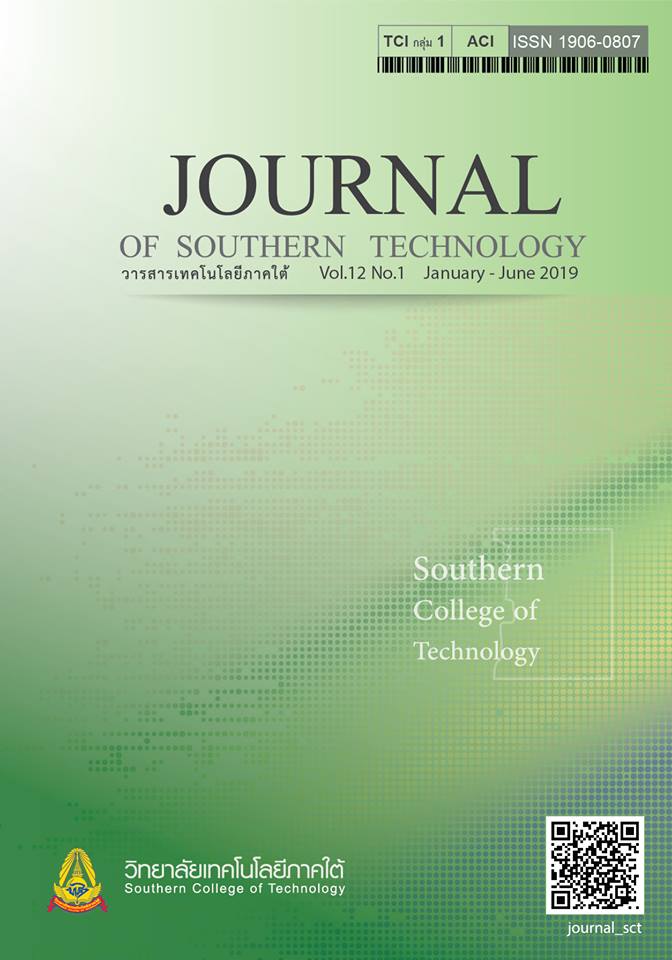Needs Assessment for Cerebrovascular Disease Patients in Rassada Hospital Health Services Network, Rassada District, Trang Province
Main Article Content
Abstract
The purposes of this research were 1) to evaluate health service needs for the cerebrovascular disease patients, and 2) to study correlation between the patients’ health needs and ability for daily routine. Research sample consisted of 154 cerebrovascular disease patients that diagnosed by physicians, under Ratsada Hospital Health Service Network, Ratsada district, Trang province, from year 2011 to 2015. The sample size derived from a calculation conformed to patients’ need proportion for each aspect of the health service that each aspect was 97.74 % on the average. Data collection was done through simple sampling with lottery method. Research tool for data collection was questionnaires. Analytical statistics were percentage, frequency distribution, percentage. In addition, Pearson Chi-square was used to analyze the correlation.
The research revealed that the highest need for cerebrovascular disease patients was involved in health care service aspect (83.77%). However, the majority of health care needs were not consistent with government health care services including Thai traditional medicine (massage, sauna and massage with hot press) and annual physical fitness test at least once a year. Building and enhancing the spiritual power strengthening aspect, the patients want to be recognized on their value and be provided for morale, and need for body & health care (76.67%). Moreover, all the need assessments for the patients participated in health care service section (aspect) harmonized with an ability level of activities in daily activities. That was the needs for health care service was likely to high when ability for routine activities was decrease, especially in aspect of body & health care, aspect of in-house environmental management, and material & financial aspect. In addition, the study result for correlation between the patients’ health need and ability for daily routine, indicated that there was entirely correlation at statistics significance .05 (P-value = .03).
Article Details
-
Authors must agree to the journal publication rules and allow the editors to edit the manuscripts for publication.
-
Author’s right belongs to the author but Journal of Southern Technology holds the right of first publication and thus allow readers to use the article for the purpose of education but not commercial.
References
with a stroke caregiver intervention program. Journal of Nursing Scholarship, 41(4), 368–375.
Chuangsawadsak, S. (1998). Needs of Relatives as Caregivers of Patients with Cerebrovascular Disease. M.N.S. Thesis,
Bangkok: Mahidol University. [in Thai]
Department of Communicable Disease Control. (n.d.). Number and percentage of deaths from non-communicable
disease and casualties in calendar year 2015. Accessed September,22.2015,https://thaincd.com/information-
statistic/non-communicable-disease-data.php. [in Thai]
Hafsteinsdóttir, T.B., Vergunst, M., Lindeman, E., & Schuurmans, M. (2011). Educational needs of patients with a stroke and their caregivers a systematic. Review of the Literature Patient Edu Couns, 85(1), 14-25.
Jittapangun, S, (1999). Principles of Geriatric Medicine. Bangkok: Chulalongkorn Publisher University. [in Thai]
Likhitlearcha, N. (2015). Nursing Home Nursing Guide. Bangkok: Nursing Office Ministry of Public Health. [in Thai]
McKevitt, C., Fudge, N., Redfern, J., Sheldenkar, A., Crichton, S., Rudd, A.R., Forster, A., Young, J., Nazareth, I., Silver, L.E., Rothwell, P.M., & Wolfe, C.D. (2011). Self-reported Long-term Needs after Stroke. STROKEAHA, 42(5), 1398-1403.
Moreland, J.D., Depaul, V.G., Dehueck, A.L., Pagiuso, S.A., Yip, D.W., Pollock, B.J., & Wilkins, E. (2009). Needs assessment of individuals with stroke after discharge from hospital stratified by acute functional independence measure
score. Disability and Rehabilitation, 26, 2185–2195.
National Stroke Foundation. (2003). National Stroke Foundation National Action Plan For Stroke. Retrieved February 3,
2018, from https://Www.NSF424_ Nationalactionplanstrokev5. Pdf
National Health Security Office. (2008). The Development of a Comprehensive Care Management System for Stroke
Patients from the National Health Security Handbook, Fiscal Year 2008. Ministry of Public Health. [in Thai]
Neurological Institute. (2015). Clinical Nursing Practice Guideline for Stroke. Bangkok: Department of Medicine Ministry
of Public Health. [in Thai]
Padroung, N. (2013). The study of continuing care for patients with cerebrovascular disease in primary care unit.
Nursing Preparedness in the Royal Thai Army Nursing College, 14(6), 25-34. [in Thai]
Satink, T., Cup, E.H., Ilott, I, Prins, J.de., Swart, B.J., & Nijhuis-van, der., Sanden, M.W. (2013). Patients' views on the impact of stroke on their roles and self: a thematic synthesis of qualitative studies. American Congress of Rehabilitation
Medicine, 94(6), 1171-83.
Singpoo, K., Tiamkao, S., Ariyanuchitkun, S., Sangpongsanon, S., Kamsa-ard, S., Lakbunyasin, A., & Soommart, Y.
(2007). The Expenditures of Stroke Outpatients at Srinagarind Hospital. Srinagarind Medical Journal, 24 (1),
54-59. [in Thai]
Suksririsareekun, S. (2008). Health Economics. Bangkok: Chulalongkorn Publisher University. [in Thai]
Thammarangsri, T. (2014). NCDs Situation Report Bureau of Health Policy Research Nonthaburi Province. International
Health Policy Program. [in Thai]
Troungpho, P., Srisabbang, P., & Sangsuwan, J. (2015). Self-care behaviors of older persons with recurrent stroke.
North-Eastern Thai Journal of Neuroscience, 8(4), 9-25. [in Thai]
Wingat, A.L., & Lacky, N.R. (1989). A Description of the needs of no institutionalized cancer patients and their primary
caregiver. Cancer Nursing, 12, 216-224.
World Stroke Organization. (2016). World Stroke. Day.2017. Retrieved February 3, 2018,
fromhttps://www.worldstrokecampaign.org/get-involved/world-stroke-day.html

